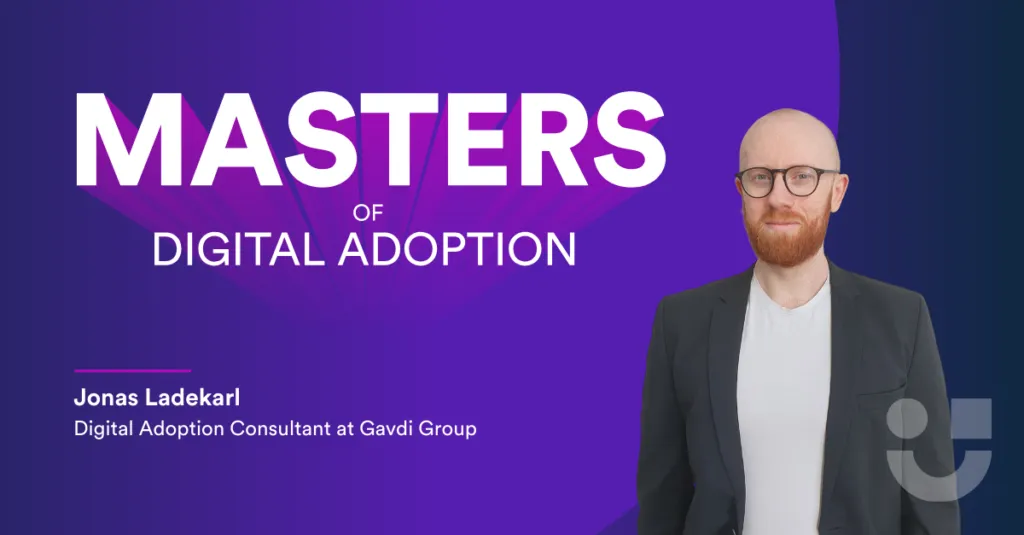Mastering digital adoption through ‘Performance automation’

SAP SuccessFactors is globally recognized as one of the leaders in cloud-based software for human capital management. For enterprises looking to onboard thousands of employees and manage the holistic data of their workforce, there is often a mismatch between the decision makers’ perceived trust in their managers’ and employees’ capacity to hit the ground running and work with the software successfully and efficiently from the moment the system is implemented, and their actual ability to do so.
We spoke with Jonas Ladekarl, a Digital Adoption Consultant at Gavdi Group, who are renowned for delivering award-winning SAP workforce management solutions built around human experience management, as well as advisory, product development and support thereof. He discusses how societal changes are forcing technological developments in the workplace, and how employees can keep up.

As a Digital Adoption consultant, I collaborate with organizations to facilitate them in bridging the gap between the digitally known and unknown. We help end-users navigate new and unexplored digital territories. As well as enabling seasoned employees in finding new ways in optimizing and improving upon existing processes.
My work is about creating the circumstances for people to succeed in their day-to-day technological tasks, minimizing any obstacles and uncertainty, and allowing them to focus on important tasks. Ultimately with the goal of enabling our customers to maximize the return on their investment.
Table of Contents
To gain competitive advantage businesses need to keep pace with technology…
Digital transformation is no longer an option for organizations. To remain competitive in the market, they need to keep up with the developments in the world from a technological standpoint.
Human capital management has shifted from the days when employee files were stored in filing cabinets and maintained manually. These processes and data are now centralized and managed in the cloud, reducing the headache for managers.
What is ‘Performance automation’ and how does it correlate with adoption…?
From an employee perspective, learning and using these tools and technologies is an ongoing and ever-evolving process. At Gavdi, one thing that sits at the center of our implementations is the idea of facilitating and enabling employees to adopt new technologies in the most efficient way. Traditional training methods like classroom-based training, reading long PDF guides or watching training videos have been the go-to methods. However, with the introduction of Digital Adoption Platforms (DAPs), there is the possibility of a more self-sustaining approach to training that organizations are taking advantage of. What a DAP can do is combine all of these traditional formats but in a set-up that users ‘learn whilst doing’, as opposed to ‘learn by doing’. With the knowledge that training material is readily available at the point of need and step-by-step guides leading them through tasks, users can move through technology processes far more quickly and efficiently.
This is the epicenter of ‘Performance automation’. A way of automating parts of the processes and freeing up time that could otherwise have been spent on more relevant tasks. Automating redundant steps of systemic and business processes allows users to focus attention on the job at hand, not on processes. This benefits new users as they don’t have to worry if they’re doing anything wrong, and for experienced users, they can improve the speed at which they complete their tasks.
I like to compare a DAP to how I use a GPS and the car’s lane-assist – they unburden my mind to a degree where I can either use the ‘downtime’ associated with driving to think about pertinent things in my work or private life, and ensures that I stay on the right path towards my end destination, whilst also shaving off unnecessary time associated with that drive, like avoiding traffic jams.
This is driven by wider social changes…
The need for ‘Performance automation’ in the workplace could be attributed to the notion of instant gratification that is permeating our lives outside of the workplace. We have our smartphones by our sides, constantly bombarding us with the latest and greatest – from global news, to updates from friends. You can get any information you need instantaneously. Everything is only a google away.
This has now reached the workplace. There is an employee expectation to have technology that is easy to navigate and gives them that instant gratification. But people can’t keep up with every technological development because it moves so fast. Therefore I don’t think it is always about learning, but rather keeping up. You have to dismiss the fluff so you can focus on what is important.
My one piece of advice for mastering digital adoption?
Tune into your end-users to get an understanding of what they are struggling with. Only when you understand people can you figure out how to help them.

